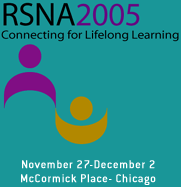Purpose: To compare the MRI-related heating per unit of specific absorption rate (SAR) profile of a conductive implant between two 1.5-Tesla/64 MHz MR systems using a transmit/receive head coil configuration. Importantly, the configuration and routing of the deep brain stimulation (DBS) system used during testing was consistent with current, FDA-approved guidelines concerning imaging of patients with DBS implants provided by the implant manufacturer.
Materials and Methods: DBS leads were configured within a gel-filled phantom of the human head and torso. Temperature variation at each of four contacts of the bilaterally-placed leads was monitored using fluoroptic thermometry. MR imaging was performed using the t/r head coils of two different generation 1.5-Tesla MR systems from the same manufacturer. Temperature changes were normalized to SAR values for the head (?T/SAR-H) and the slope of this ?T/SAR-H by time relationship was compared between the two scanners.
Results: The ?T/SAR-H for the implant was as much as 3.5 times higher across recording sites on one MR system as compared to the other (p <0.01). Conclusion: The present study reveals significant differences in the RF-induced heating profile of a DBS implant across two different MR systems from the same manufacturer, providing further evidence that SAR does not constitute a reliable index of heating for elongated, conductive implants such as the DBS hardware system tested. Although similar differences between different MR systems have been reported previously using a body RF transmit configuration (8), the current results are particularly relevant in that the data were derived using a configuration of the MR system and the implant consistent with the FDA-approved MR safety guidelines provided by the implant manufacturer. Based on the data presented, the upper limit of RF power provided in those guidelines could result in a ?T of 2.5°C over a period of two minutes on one of the two systems evaluated, a value 2.5 times higher than the spatially localized temperature limit for the head provided by the International Electrotechnical Commission (IEC).
Baker, K,
Tkach, J,
Rezai, A,
Hot Topic: Variability in Heating of an Elongated, Conductive Implant Across Two MR Systems. Radiological Society of North America 2005 Scientific Assembly and Annual Meeting, November 27 - December 2, 2005 ,Chicago IL.
http://archive.rsna.org/2005/4425790.html

